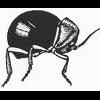- Home
- Sponsors
- Forums
- Members ˅
- Resources ˅
- Files
- FAQ ˅
- Jobs
-
Webinars ˅
- Upcoming Food Safety Fridays
- Upcoming Hot Topics from Sponsors
- Recorded Food Safety Fridays
- Recorded Food Safety Essentials
- Recorded Hot Topics from Sponsors
- Food Safety Live 2013
- Food Safety Live 2014
- Food Safety Live 2015
- Food Safety Live 2016
- Food Safety Live 2017
- Food Safety Live 2018
- Food Safety Live 2019
- Food Safety Live 2020
- Food Safety Live 2021
- Training ˅
- Links
- Store ˅
- More

Pest Control Trend Analysis Report
Started by MMS, Apr 23 2012 03:09 AM
12 replies to this topic
#1

Posted 23 April 2012 - 03:09 AM
Hi, can I ask is there any limit of number of insects caught using insect light trap in HACCP? I want to do pest control trend analysis to record down the insect caught using the insect light trap. Thank You.
#2

Posted 23 April 2012 - 08:44 AM
Hi MMS,
I'm not aware of any standard/limits on insect numbers caught in light traps. The purpose of trend analysis is of course to observe and detect 'trends'.
Assuming you have in place effective pest control measures for insects you can establish a base line -for your operation- over a defined time period (including seasons where activity may be inherently higher). Trending data will then allow you to identify any unusual activity which can be investigated. This can cover both quantitative and qualitative analysis of the insects found in the units.
I'm not aware of any standard/limits on insect numbers caught in light traps. The purpose of trend analysis is of course to observe and detect 'trends'.
Assuming you have in place effective pest control measures for insects you can establish a base line -for your operation- over a defined time period (including seasons where activity may be inherently higher). Trending data will then allow you to identify any unusual activity which can be investigated. This can cover both quantitative and qualitative analysis of the insects found in the units.
BSc. MSc - Food Safety Management
CEO, Safefood 360 - food safety management software for leading food businesses
Visit our IFSQN Discussion Forum | Visit our food safety software website
|
Thanked by 1 Member:
|
|
#3

Posted 25 April 2012 - 09:37 PM
Hi MMS,
I'm not aware of any standard/limits on insect numbers caught in light traps. The purpose of trend analysis is of course to observe and detect 'trends'.
Assuming you have in place effective pest control measures for insects you can establish a base line -for your operation- over a defined time period (including seasons where activity may be inherently higher). Trending data will then allow you to identify any unusual activity which can be investigated. This can cover both quantitative and qualitative analysis of the insects found in the units.
There are no standards set within any third party system or in BRC . However, it can be worthwhile logging your customer complaints (if any) for flying insects against the counts in your fly killers. An analysis may show where there are periods when higher numbers of flies also result in higher complaints. However, it may also show that there is no effect upon complaints. This will allow you to set some standards for your site.
The key elements are the trends (up, down, periodicity, seasonal etc) and the potential risks to products. You need to emasure both to have effective trend analysis that will mean anything of use to your business.
#4

Posted 26 April 2012 - 04:52 PM
Dear All,
Not sure I entirely agree with the previous posts. The absolute level is surely also very important, not only “trends” per se.
One thing for sure IMEX is that the tolerance for mobile flies for an auditor while walking through the process area is zero. Audibly so! And although no quantitative criticisms over trapping data were met, there were plenty of queries as to why more at location A than location B etc. (predictably up near the Engineers entry/exit!). This is a locational trend i suppose.
Any “target” daily maximum will obviously depend on the situation / location but surely one would hope to see low single digit numbers in a well-controllable space perhaps ? Or usually Nil ?? This all sounds a bit like the coliform method for monitoring drinking water sources.
Rgds / Charles.C
Not sure I entirely agree with the previous posts. The absolute level is surely also very important, not only “trends” per se.
One thing for sure IMEX is that the tolerance for mobile flies for an auditor while walking through the process area is zero. Audibly so! And although no quantitative criticisms over trapping data were met, there were plenty of queries as to why more at location A than location B etc. (predictably up near the Engineers entry/exit!). This is a locational trend i suppose.
Any “target” daily maximum will obviously depend on the situation / location but surely one would hope to see low single digit numbers in a well-controllable space perhaps ? Or usually Nil ?? This all sounds a bit like the coliform method for monitoring drinking water sources.
Rgds / Charles.C
Kind Regards,
Charles.C
#5

Posted 12 June 2012 - 06:47 AM
As far as our auditor informed me, the main reason behind the trend analysis of pest control is to determine which kind of pests are high in number in which parts of the facility. Also it could be used to determine in which season the number of pests increase and why.
|
Thanked by 2 Members:
|
,
|
#6

Posted 21 December 2012 - 08:06 PM
As far as our auditor informed me, the main reason behind the trend analysis of pest control is to determine which kind of pests are high in number in which parts of the facility. Also it could be used to determine in which season the number of pests increase and why.
My facility is in northeast Ohio. There are fully four seasons here.
Shockingly, my trend data shows that there is less flying insect activity when it's 15 degrees F outside, as opposed to 90 F!
I'm sure there are instances where trend data might be useful. For the most part i just find it silly.
Marshall
#7

Posted 31 December 2012 - 05:08 PM
My facility is in northeast Ohio. There are fully four seasons here.
Shockingly, my trend data shows that there is less flying insect activity when it's 15 degrees F outside, as opposed to 90 F!
I'm sure there are instances where trend data might be useful. For the most part i just find it silly.
Marshall
I wouldn`t be so sure of it`s sillyness Marshall, for me the basis of the trend analysis is to determine potential problems with the plant, increases in the populations of different insects and beetles in the fly killers could be a first warning of potential problems. Yes if you remove the seasonality aspect of the counts then it is a very good tool.
ie: Many SPI`s are particularly suseptable to UV in the fly killers and a marked increase would indicate the presence of a problem in the plant near to that unit so it`s then time to open up and inspect to find the build-up of breeding materials in the machinery. In my world the fly killers are much more than a extra illumination for the building.
Best wishes and happy new year
Tony
"If you think it is expensive to hire a professional to do the job, wait until you hire an amateur."
Red Adair, American Oil Well Firefighter.
Red Adair, American Oil Well Firefighter.
#8

Posted 02 January 2013 - 04:47 PM
Just this New Years Eve (albeit to rotent pest control and Trend Analysis) I posed this observation to Senior Management:
_____________________________________________________
There is some concern over the dock doors and pest ingress, please follow my rationale in my experience:
I worked in 100 year old canneries on docks have plenty of wholes the much bigger than a pencil, yet we had never caught a mouse or rat. As we did not have a contract pest control service, I and my QA techs were required to be trained in Pest Control. Our “trend analysis” satisfied not only our 3rd Party Audits but FDA, State health inspectors, USDC, US Army and many clients.
Therefore, far as SQF goes, our system of validation with our contracted Pest Control provider’s findings (no rodents have been captured this year at this location) would warrant that, as the nature of rats/rodents behavior provide, pests do not ingress through this fashion. (i.e. – we do not spend money on a or double entry way/vestibule to deter mice from scurrying past the employees feet when they enter the building as we have no evidence of such rodent behavior in this location).
If this is for SQF concerns, I will reason this point (I am also Integrated Pest Management certified and by my former employer). I’ll reason this point to USDA/FDA or any other auditor if it is necessary, this is why our contracted Pest Control provider does trend analyses and why we pay for their services.
The SQF auditor should agree with this reasoning (this is why “pest control trend analyses” is required in GFSI benchmarked standards); it makes sense.
We getting a quote anyway to see the cost and also have a “back-up” reply/proof. We could also speak with our Pest Control provider and have them re-assess the dock doors to see their opinion.
If I have overlooked or unaware of anything, please let me know.
______________________________________________________________
From the BRC audits I have dealt with, the auditor is looking at the pest trend analysis for "infestation". One could certainly point to customer complaints, but better (in a HACCP sense) to eliminate the possibility though historical (or anecdotal observations if historical records are not available) to define "infestation" by putting some limits on it that will warrant action (and be prepared to act if these limits are reached).
Limits on insect light traps? Go look as historical records or personal observations to get it started. Dont trap your self with tight limits, but it also has to make sense, they can also be changed upon new discoveries. It is all about having a "system" in place.
Hope this helps!
Cheers,
-B
(PS - I have not yet verified if “pest trend analyses” is required in ALL GFSI benchmarked standards, but this is my experience with BRC, SQF and IFS so far)
_____________________________________________________
There is some concern over the dock doors and pest ingress, please follow my rationale in my experience:
I worked in 100 year old canneries on docks have plenty of wholes the much bigger than a pencil, yet we had never caught a mouse or rat. As we did not have a contract pest control service, I and my QA techs were required to be trained in Pest Control. Our “trend analysis” satisfied not only our 3rd Party Audits but FDA, State health inspectors, USDC, US Army and many clients.
Therefore, far as SQF goes, our system of validation with our contracted Pest Control provider’s findings (no rodents have been captured this year at this location) would warrant that, as the nature of rats/rodents behavior provide, pests do not ingress through this fashion. (i.e. – we do not spend money on a or double entry way/vestibule to deter mice from scurrying past the employees feet when they enter the building as we have no evidence of such rodent behavior in this location).
If this is for SQF concerns, I will reason this point (I am also Integrated Pest Management certified and by my former employer). I’ll reason this point to USDA/FDA or any other auditor if it is necessary, this is why our contracted Pest Control provider does trend analyses and why we pay for their services.
The SQF auditor should agree with this reasoning (this is why “pest control trend analyses” is required in GFSI benchmarked standards); it makes sense.
We getting a quote anyway to see the cost and also have a “back-up” reply/proof. We could also speak with our Pest Control provider and have them re-assess the dock doors to see their opinion.
If I have overlooked or unaware of anything, please let me know.
______________________________________________________________
From the BRC audits I have dealt with, the auditor is looking at the pest trend analysis for "infestation". One could certainly point to customer complaints, but better (in a HACCP sense) to eliminate the possibility though historical (or anecdotal observations if historical records are not available) to define "infestation" by putting some limits on it that will warrant action (and be prepared to act if these limits are reached).
Limits on insect light traps? Go look as historical records or personal observations to get it started. Dont trap your self with tight limits, but it also has to make sense, they can also be changed upon new discoveries. It is all about having a "system" in place.
Hope this helps!
Cheers,
-B
(PS - I have not yet verified if “pest trend analyses” is required in ALL GFSI benchmarked standards, but this is my experience with BRC, SQF and IFS so far)
____________________________________________________
><((((º> Salmon of Doubt & NOAA HACCP lover of Bacon
><((((º> Salmon of Doubt & NOAA HACCP lover of Bacon
|
Thanked by 1 Member:
|
|
#9

Posted 02 January 2013 - 05:41 PM
I certainly was not discounting "trend analysis" per se. The first year in my current job I did trend analysis on interior rodent traps, exterior bait stations and insect light traps (which had not been done prior to me coming onboard).
After the first year, I took the trend data and the raw inspections from the previous 5 years and did the following:
Reviewed all data and determined that there had not been a rodent caught inside the facility for 6 years. Reviewed the placement of interior rodent traps. Determined that there were roughly 10 traps that could be completely removed, as they were in areas of the facility where rodents would not typically be found, and no rodents had been found.
Determined that there was significantly more feeding from external bait stations on two sides of the facility than the other two.
Repositioned bait stations to place more stations in the areas where more activity was observed.
If trend analysis had been done prior to my arrival, one would think the previous holder of my position would have come to the same conclusions.
As far as the light traps go, we have 22 shipping and receiving docks, which by nature are not completely sealed at all times, which allows for flying insect ingress into the facility. This is where the "silly" factor comes in. It's not possible to completely eliminate flying insects from the facility, and by nature there are more flying insects in warm weather rather than cold. So the trend analysis really will be skewed by that reality. Which is to say the "analysis" really does not tell you much.
Now, if you are in a manufacturing facility where the process lends itself to breeding of, or attraction to flying insects, you might have more reason to pay greater attention to the trend analysis. In my situation, not so much.
Marshall
After the first year, I took the trend data and the raw inspections from the previous 5 years and did the following:
Reviewed all data and determined that there had not been a rodent caught inside the facility for 6 years. Reviewed the placement of interior rodent traps. Determined that there were roughly 10 traps that could be completely removed, as they were in areas of the facility where rodents would not typically be found, and no rodents had been found.
Determined that there was significantly more feeding from external bait stations on two sides of the facility than the other two.
Repositioned bait stations to place more stations in the areas where more activity was observed.
If trend analysis had been done prior to my arrival, one would think the previous holder of my position would have come to the same conclusions.
As far as the light traps go, we have 22 shipping and receiving docks, which by nature are not completely sealed at all times, which allows for flying insect ingress into the facility. This is where the "silly" factor comes in. It's not possible to completely eliminate flying insects from the facility, and by nature there are more flying insects in warm weather rather than cold. So the trend analysis really will be skewed by that reality. Which is to say the "analysis" really does not tell you much.
Now, if you are in a manufacturing facility where the process lends itself to breeding of, or attraction to flying insects, you might have more reason to pay greater attention to the trend analysis. In my situation, not so much.
Marshall
|
Thanked by 1 Member:
|
|
#10

Posted 03 July 2013 - 01:44 PM
The whole point of trend analysis is to give you early warning of potential problems and to measure the effectiveness of your pest control. It is not an easy thing to do as you have to take into account factors such as seasonality, location of pest trap and servicing intervals.
Obviously if you are not an expert in excel and have limited time this can be challenging to say the least.
Obviously if you are not an expert in excel and have limited time this can be challenging to say the least.
Edited by Simon, 03 July 2013 - 02:22 PM.
Removed advertising link
#11

Posted 02 August 2013 - 08:28 PM
Hi, can I ask is there any limit of number of insects caught using insect light trap in HACCP? I want to do pest control trend analysis to record down the insect caught using the insect light trap. Thank You.
Kthomson,
With pest control technicians I've worked with the number of insects is usually reported as 0, 1, 2,...When you have more than a hundred list as TNC Too Numerous to Count.
There is no limit I am aware of. Once you have your light traps in place you will find out quickly whether you have a risk to food safety.
Do you have a plan as far as quantity on ILT's and locations? This will be very important.
CB
#12

Posted 15 January 2014 - 04:00 PM
When I see more than 4 Indian meal moths in my pheromone trap in a week I start looking around for possible infestaion
#13

Posted 23 April 2014 - 07:29 AM
There are glueboards with some squares on them. You can get a percentage of squares with insects over total available squares.
1 user(s) are reading this topic
0 members, 1 guests, 0 anonymous users





















